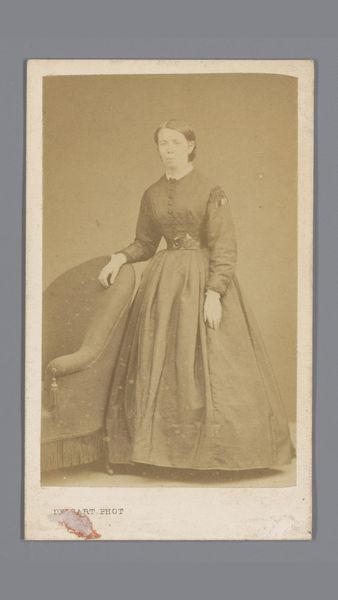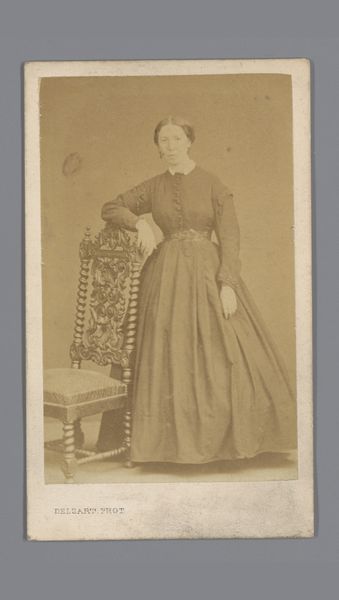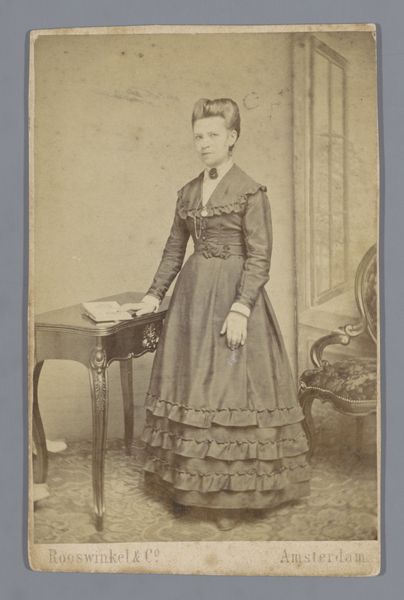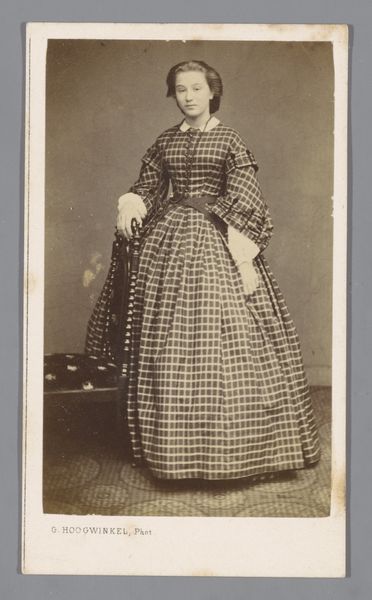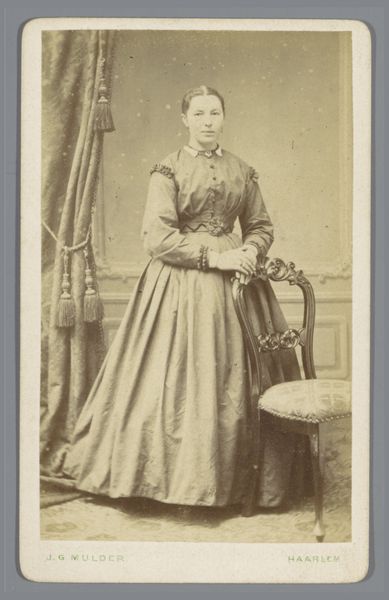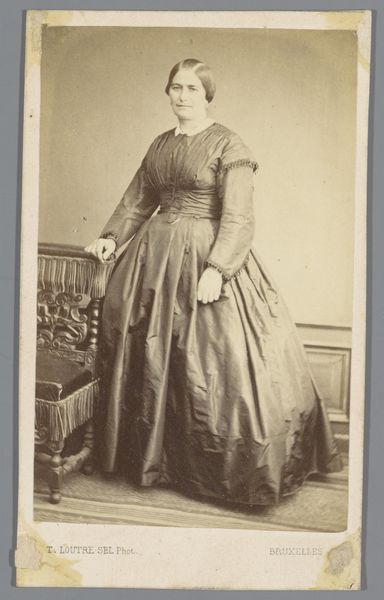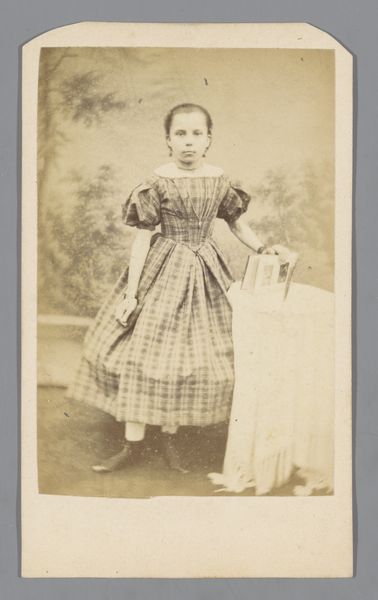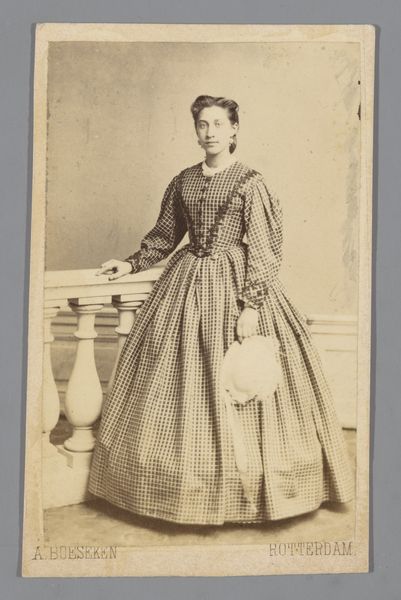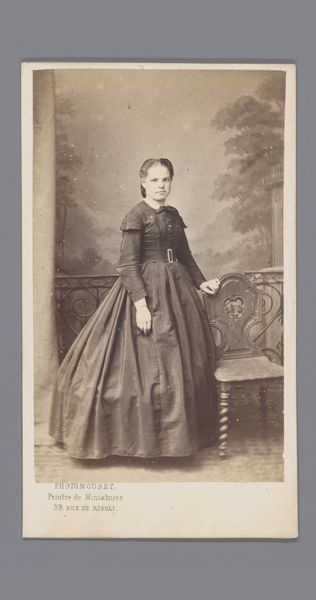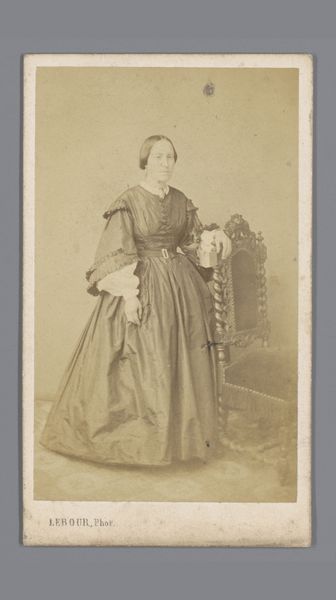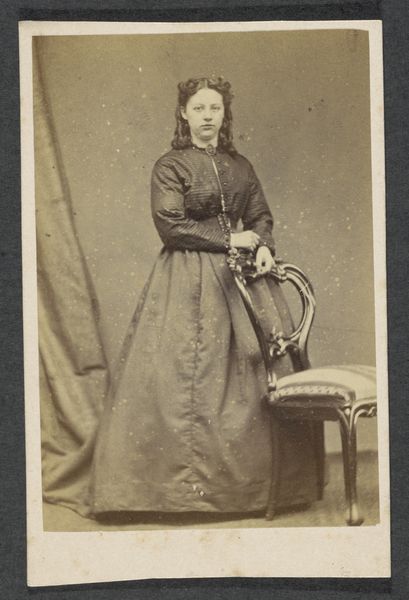
Portret van een onbekende jonge vrouw met een boek bij een stoel 1870 - 1893
0:00
0:00
#
aged paper
#
toned paper
#
muted colour palette
#
photo restoration
#
historical fashion
#
unrealistic statue
#
coloured pencil
#
19th century
#
watercolour illustration
#
watercolor
Dimensions: height 101 mm, width 63 mm
Copyright: Rijks Museum: Open Domain
Curator: This is a fascinating studio portrait dating from between 1870 and 1893, entitled "Portret van een onbekende jonge vrouw met een boek bij een stoel" attributed to Bernardus Petrus Rabels. It captures an anonymous young woman, likely of the Dutch middle class. Editor: There’s a starkness to this image, isn't there? The muted palette, dominated by shades of grey and beige, creates a serious atmosphere. It feels almost austere. Curator: Absolutely, the restrained color palette speaks to the social conventions of the era and the relative constraints upon women’s agency and expression. The fact that she's holding a book positions her within a rising discourse of female literacy. One could argue this implies the portrait aimed to defy the limitations prescribed on women by illustrating their pursuit of intellectual agency. Editor: You make a persuasive case. Visually, I'm drawn to the interplay of vertical lines: the woman’s dress, the background curtain, even the stripes on the chair—all subtly converge on her face. It gives her figure a certain imposing, even severe, verticality. Curator: Indeed. It’s key to note, as well, that portraiture of this kind was accessible almost exclusively to those with some means. Commissioning an image like this indicates the subject had the means to assert her social standing, albeit within strict, gendered norms. I'm interested in what this photograph has to say about the economics and gender dynamics of the time. Editor: That’s a compelling perspective. For me, I keep returning to her expression—it is both stoic and piercing. I can almost see defiance within a highly controlled and very deliberately constructed composition. The small book acts as a compositional counterpoint to the severity of the linear elements. Curator: I agree. The book represents far more than a mere accessory; it represents knowledge and enlightenment. While our sitter undoubtedly contended with cultural restraints, that small book offers insight into the rising expectations that many 19th century women would undoubtedly have held for their intellectual freedoms and their right to participate in education and the written arts. Editor: Viewing the interplay of social messaging with a focus on how they were constructed is a valuable lens to look through. It opens doors to further appreciation for an era which valued appearances while concealing great change. Curator: Agreed. By emphasizing cultural and historical frameworks we enrich our view of aesthetic and expressive endeavors of this era, adding depth to this captivating woman's narrative and her place in time.
Comments
No comments
Be the first to comment and join the conversation on the ultimate creative platform.
